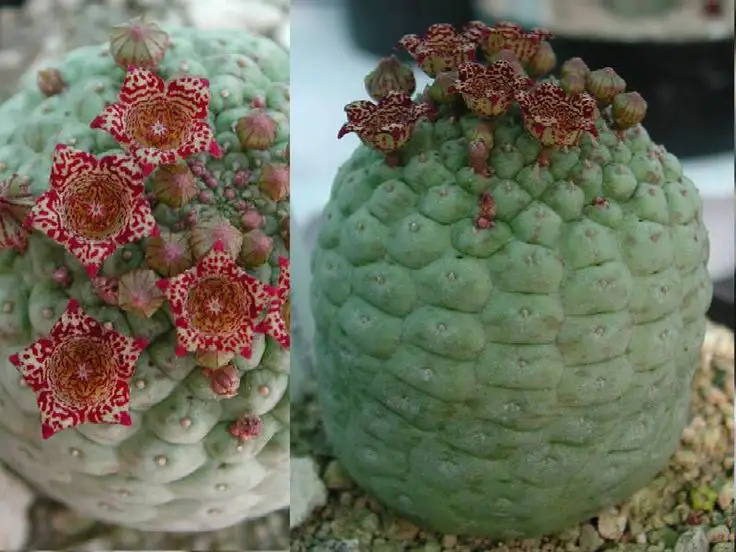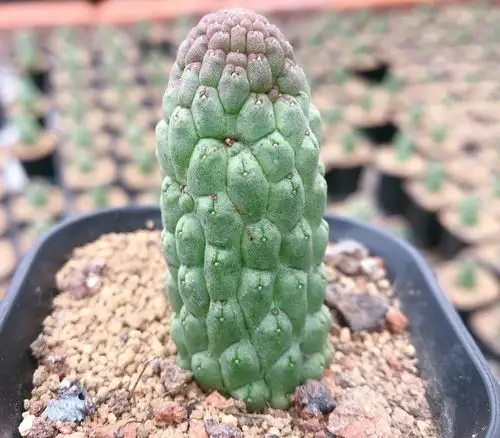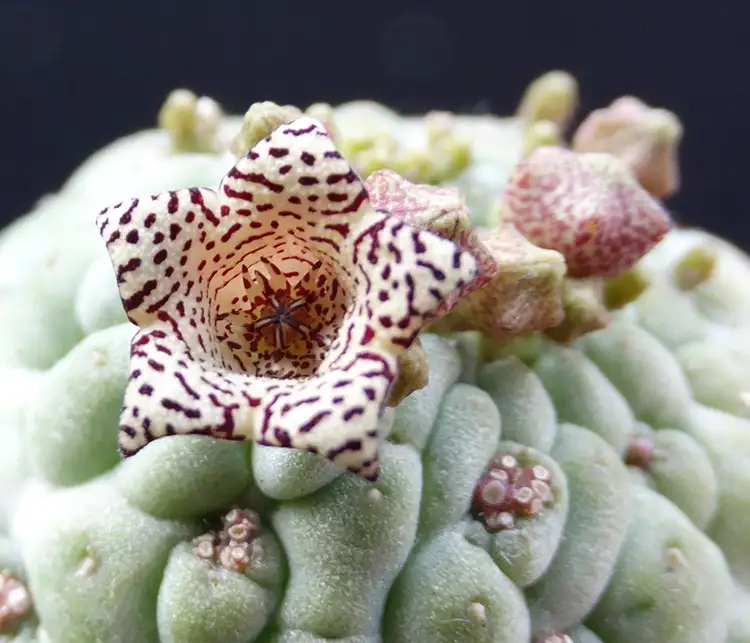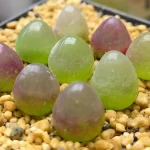The Buddha’s Head Succulent, or Larryleachia Cactiformis, is a rare plant. It is from the Apocynaceae family. It hails from the southern regions of Africa, like South Africa and Namibia. What makes it stand out are its leafless, fleshy stems. These stems start off round and become more cylindrical as they grow.
The plant gets its name from the dense, triangular or half-sphere bumps on the stems. They look like the curly hair on a Buddha statue. From June to August, it blooms with stunning flowers. These flowers have disk-shaped petals. The petals range from pale yellow to greenish-yellow. Deep purple dots speckle them.
Cultivation and Care for Larryleachia Cactiformis
Growing Buddha’s Head Succulent requires you to understand its native habitat. You need to replicate the conditions that help it stay healthy and grow. This unique succulent thrives in warm, dry, and well-lit environments. It prefers well-ventilated areas and can tolerate some shade. Larryleachia Cactiformis is drought-resistant. It struggles in moist soil and is sensitive to cold and extreme heat. Balancing its care is crucial for its growth. This is especially true during its hot dormancy and cool growth.
Propagation Techniques
Propagating Larryleachia Cactiformis can be an exciting try for succulent enthusiasts. You can do this by cutting side shoots or the top of the plant. After drying for 5-7 days, you can plant them in coarse sand or perlite. You can replant new plants that will sprout from the cuttings’ base left in the original soil. Sowing seeds is another good way to propagate. It offers an alternative way to expand your collection of this intriguing plant.
Optimal Conditions for Growth
To help Larryleachia Cactiformis grow best, give it enough light. This is especially important from March to May and September to November. The plant is growing then. Consistent, stable light exposure is key, along with avoiding overwatering. The soil should completely dry out before watering again. During the summer, the plant is dormant. It requires less water and you should keep it in bright, but indirect, sunlight. Winter care is similar. It also requires ensuring that temperatures stay above 10°C (50°F) to prevent cold damage.
Lighting and Watering Needs
Larryleachia Cactiformis benefits from a “soak and dry” watering approach. It needs lots of light during its growth. You must adjust how often you water it. You must also ensure it gets even sunlight. These steps are crucial for keeping this succulent looking good. They also prevent etiolation or uneven growth.
Repotting and Soil Requirements
Repotting Larryleachia Cactiformis in spring or autumn helps refresh its environment. An ideal potting mix drains well and is nutrient-rich. It includes leaf mold, garden soil, coarse sand or perlite, and a bit of bone meal. These ingredients promote healthy growth.
Seasonal Care Tips
Adjusting care practices is essential for Larryleachia Cactiformis. In summer, reduce watering and protect the plant from direct sunlight. In winter, give it enough light. Water it very little to copy its natural dormant period.
Conclusion
Larryleachia Cactiformis is a remarkable succulent. It adds intrigue and beauty to any collection. Fans can enjoy this plant’s unique qualities. They need to know its habitat and how it grows. They can also enjoy its stunning flowers. They do this by mimicking its habitat. With care, propagation, and seasonal adjustments, Buddha’s Head Succulent will thrive. It will show the spectacular qualities that make it prized among succulent lovers.








Leave a Reply